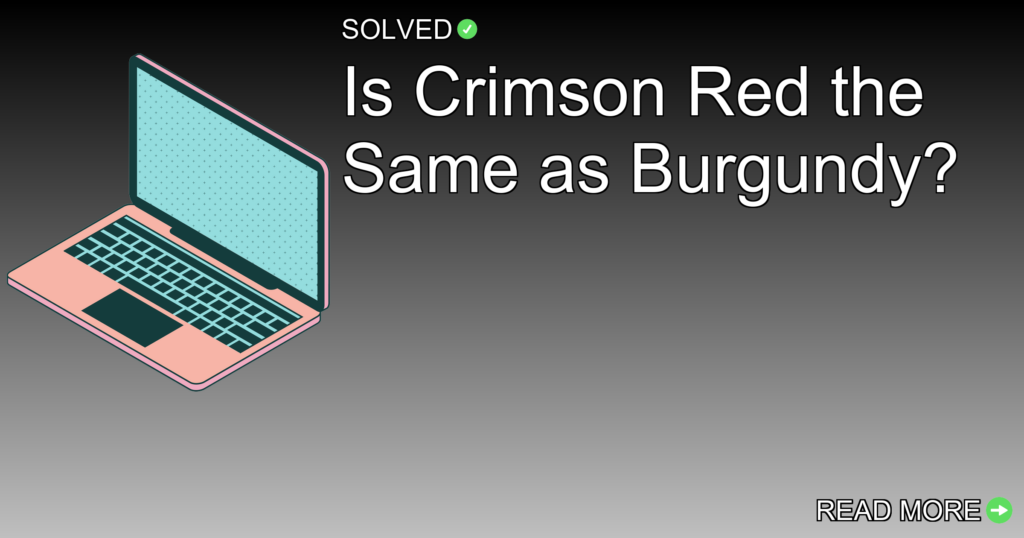* Crimson red is brighter and often linked to the color of blood.
* Burgundy has a deeper, darker hue, similar to that of red wine.
* Both colors can complement each other well when used together in design.
Introduction
When it comes to rich, warm hues for design and fashion, two colors often come into play—crimson and burgundy. These shades are frequently mistaken for one another but hold distinct characteristics that set them apart. In this article, we’ll look into the vibrant world of these two captivating colors, exploring their origins, differences, and how you can effectively use them together.
What Sets Crimson Apart?
Crimson is a bright, vivid shade of red that dates back centuries. Originally derived from the kermes dye produced by the kermes vermilio insect, crimson has always been associated with intensity and vitality.
Related Colors
Crimson sits closely on the color spectrum with:
– Purple
– Red
– Rose Red
These colors share similar vibrance and can be paired well with crimson in different designs.
Burgundy
Burgundy takes its name from a famous wine-producing region in France. This shade evokes a sense of sophistication and depth due to its darker hue. Burgundy’s association with red wine gives it an elegant vibe that’s perfect for formal settings.
Key Characteristics
- Darker Hue: Burgundy has more depth compared to crimson.
- Sophisticated Feel: Often used in formal attire and settings.
- Versatile: Pairs well with other dark colors like navy blue and olive green.
Comparing Crimson and Burgundy
While both are rich shades of red, they differ significantly in brightness and mood. Let’s break down their main differences:
Hue and Shade
- Crimson: Bright and vibrant; often associated with blood.
- Burgundy: Darker and richer; reminiscent of red wine.
Usage Contexts
- Crimson: Best used when you want to draw attention or add energy.
- Burgundy: Ideal for sophisticated or formal environments.
Do Crimson and Burgundy Go Together?
Absolutely! Pairing these two shades can create visually stunning contrasts. Here’s how you can use them effectively:
Design Palettes
- Home Décor: Use crimson accents against burgundy walls for a bold look.
- Fashion: A burgundy dress with crimson accessories can make a striking statement.
- Graphic Design: Combine these colors with royal blue or olive green for an eye-catching effect.
Crimson vs Maroon
Another color often confused with crimson is maroon. Though similar, maroon leans more towards brownish-red tones.
Definitions:
- Crimson: Bright red.
- Maroon: Dark brownish-red or claret (purple) color.
Troubleshooting Color Choices
Selecting the right shades can be tricky. Here are some common mistakes:
* Confusing brightness levels: Make sure you know whether you need a bright (crimson) or dark (burgundy) hue.
* Ignoring undertones: Consider the underlying tones—burgundy has more depth compared to crimson.
* Overuse: Using too much of either color can overwhelm your design. Balance is key!
Conclusion
Both crimson and burgundy offer unique qualities that can elevate your design projects or wardrobe selections. Understanding their differences allows you to use them more effectively, either separately or together. So go ahead—experiment with these rich reds and discover the endless possibilities they bring!
Using simple yet precise language helps make sure clarity while maintaining an engaging tone throughout this article. By following these information, you’ll be well-equipped to distinguish between crimson and burgundy while making informed choices in your creative endeavors.
Remember: The beauty lies in understanding these nuances so you can apply them masterfully!
“`



